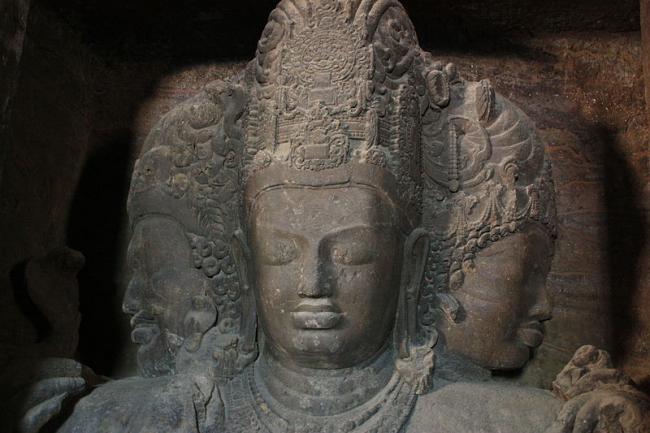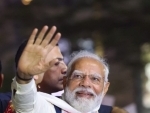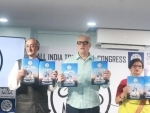
Maharashtra: Enduring Vulnerabilities
On May 10, 2016, Security Force (SF) personnel killed a woman CPI-Maoist 'commander', identified as Rajita Ramko Risi Usendi, in an encounter under Dhanoratehsil (revenue unit) of the Gadchiroli District.
CPI-Maoist cadres killed two of their 'party organisers', identified as Sheshrao Darro (52) and Devaji Atla (55), outside Masanadi village in the Pendri taluka (administrative unit) of the Gadchiroli District on April 30, 2016. The duo was whisked away from the village in the night of April 29. Police disclosed that Darro was the 'vice-president' of the Jantana Sarkar (Maoist 'people's government') at the village level and Atla was an old member of the party. The Maoists alleged that Darro and Atla were not focusing on the organization, but were helping the Police, and were consequently targeted. Significantly, Darro's brother works with the special operations squad, Crack-60, of the District Police.
On April 25, 2016, Maoist cadres killed two civilians in the District. A Gadchiroli Police statement disclosed, "Matpurshaha Sanaku Holi (42), a resident of Khamtala village and Gogasu Budhu (41), a resident of Huralayadand village under Kurkheda Block of Gadchiroli District were killed by the Maoists today [April 25]... The Maoists went to the homes of both the victims and shot them dead branding them as 'Police informers'..."
On April 14, 2016, a Policeman was killed when CPI-Maoist cadres opened indiscriminate fire at him at a function in Mauje Chhallewada village in the District to mark the 125th birth anniversary of Dr. B.R. Ambedkar. According to reports, when former Maharashtra legislator Deepak Atram was addressing the function, his Police bodyguard, Nanaji B. Nagose, who was posted on duty near the stage, was suddenly accosted by six heavily armed Maoists who fired several rounds at the guard before fleeing into the nearby forest with his AK-47 Assault rifle and 100 rounds of ammunition. Nagose who was injured in the firing, later succumbed to his injuries. The former legislator was unhurt as the guard and his weapon were the target of the Maoists.
According to partial data compiled by the South Asia Terrorism Portal (SATP) database, Gadchiroli District has witnessed 16 killings, including seven civilians, two SF personnel and seven Maoists, thus far in 2016 (data till May 28, 2016). This compares to seven killings, including five civilians and two SF personnel, during the corresponding period of the previous year. A total of 17 fatalities were recorded through 2015, including 11 civilians, four SF personnel and two rebels. The District accounted for at least 429 Maoist-linked fatalities, including 152 civilians, 142 SF personnel and 158 Maoists, since the September 21, 2004 formation of the CPI-Maoist. During the same period, the State recorded at least 452 Maoist-linked fatalities, including 152 civilians, 142 SFs and 158 Maoists. Gadchiroli thus accounted for 94.91 per cent of total Maoist-linked fatalities recorded in the State since 2004.
Gadchiroli had seen some respite from Maoist violence between 2012 and 2014. Significantly, the number of civilian fatalities, an important indicator of security, registered a continuous decline during this period. The number of civilian fatalities stood at 34 in 2011; came down to 18 in 2012; declined further to nine in 2013; and remained at nine in 2014. The number of civilian fatalities increased to 11 in 2015. Civilian fatalities in year 2011 were the highest recorded in the District since the formation of the CPI-Maoist in September 2004.
Problems, however, persist and the Maoists are escalating their efforts to revive influence and operations, enormously aided by the geographical vulnerabilities of the District. Gadchiroli shares borders with four Districts of Chhattisgarh [Bijapur, Kanker, Narayanpur and Rajnandgaon] and two Districts of Telangana [Adilabad and Karimnagar]. Moreover, three other Districts of Maharashtra, Bhandra, Chandrapur and Gondiya, share borders with Gadchiroli. With the exception of Bhandra, all the Districts with which Gadchiroli shares borders are among the 106, across 10 States, listed by the Union Ministry of Home Affairs (UMHA) as Naxal-[Left-Wing Extremism (LWE)]-affected Districts of India. Gadchiroli thus falls in a zone which is highly Maoist-afflicted.
The reasons for the strong Maoist presence in the Gadchiroli are many. Both Telangana and Chhattisgarh are strategically crucial for the Maoists, and Gadchiroli serves as a transit between these two States. Moreover, the District has a 75.96 per cent forest cover, making the task of locating and neutralising the Maoists' hideouts quite difficult.
Acute backwardness is another factor that facilitates the Maoist presence in the District. According to the 2012 Maharashtra Human Development Report, Gadchiroli falls in the 'low' development category, securing the 33rd rank among 34 Districts assessed [Maharashtra now has 36 Districts.] In terms of literacy, Gadchiroli is the second lowest literate District in the State after Nandurbar (63 per cent) with 70.6 per cent literacy, in comparison to 90.3 per cent for Mumbai and a State average of 82.9 per cent. The infant mortality rate - at 63 per 1000 live births - is also very high in Gadchiroli, in comparison to 13 for Kolhapur and 18 for Mumbai. The number of Institutional births ranges between 93.5 per cent in Mumbai suburban, to as low as 24 per cent in Gadchiroli. Moreover, the District recorded just 34.6 per cent of safe deliveries as against the State average of 69.2 per cent. [Gadchiroli was only better than Nandurbar where the percentage of safe deliveries was found to be the lowest (34 per cent)]. In terms safe and tap drinking water facilities, wide inter-District variations exist, with households in Mumbai and Mumbai (Suburban) at the higher end (97.8 per cent and 96.5 per cent, respectively) and those in Gondia, Gadchiroli and Sindhudurg at the other extreme (less than a third of households accessing tap water). 43 per cent of the population does not have any type of bathrooms in Gadchiroli. Significantly, Gadchiroli and Nandurbar maintained the lowest HDI values in both 2001 and 2011.
A joint survey conducted by the US-India Policy Institute and the New Delhi based Centre for Research and Debates in Development Policy released on January 29, 2015, found that, among 599 Districts across India (under purview of the survey) Gadchiroli was ranked 429. The report of the survey took composite development - measured in terms of economic development and the indices of health, education and material well-being - into consideration.
The Maoists also continue to get support from the local population because of some unfortunate actions by SFs. According to media reports, for instance, the people of Reknar village in Etapalli taluka were at the receiving end of Police wrath when a Crack-60 team of the Hedri Police Post in Gadchiroli thrashed them on May 13, 2016, in retaliation for the killing by Maoist cadres of Constable Deepak Sedmake, on March 11. Earlier, sources from Hedri indicated that the Police had rounded up several traders from the weekly market where the Constable was killed. The traders were also thrashed at the camp. Inspector General of Police, Nagpur and Naxal range, Ravindra Kadam acknowledged and condemned the incident, stating that such actions only pushed security initiatives several years back. Kadam added, "We have already called for explanation from the post in-charge and commander of the Force at Hedri holding them responsible for the high-handedness. Actions would follow after the explanations are received."
Unfortunately, the same mistake was repeated on May 16, 2016, when the District Police allegedly assaulted five youth at Milgulwancha village in Gadchiroli District, suspecting them of aiding Maoists in the area.
Meanwhile, the CPI-Maoist in Maharashtra has issued a 'hit list' of 37 persons, including senior Police officers and Police informants, vowing to eliminate them in 2016. The Maoists have roped in units of 'Company-10', trained to kill with precision, from Chhattisgarh to execute the plan. An intelligence note claimed, "This [the latest hit list] is a matter of serious concern for the State, even as inputs show new strategies are being adopted to attract youth with fresh vigour."
Regrettably, operational pressures on the Maoists in the District in particular and State at large have diminished over the recent past. Significantly, SFs had eliminated 28 Maoists in the District in 2013 while losing seven of their own personnel yielding a ratio of 1:4. The kill ratio came down to just 1: 0.90 [11 troopers, 10 Maoists killed] in 2014. It further worsened to 1:0.5 [four troopers, two Maoists killed] in 2015. In the current year, the ratio stands at 1: 2; two SF personnel, four Maoists (another three Maoists were killed in internal rivalry)]. Further, at least three out of the top nine Police positions in Gadchiroli Range were vacant as on May 29, 1016, including the top most official in the Region, the Deputy Inspector General of Police, Gadchiroi; Superintendent of Police (SP), Aheri; and Additional SP, Aheri. Recurrent vacancies in this deeply vulnerable area reflect an extraordinary measure of complacency and neglect on the part of the State administration.
The Maoists are looking for opportunities to recover lost ground in Gadchiroli, in particular, and across wider areas in Maharashtra. As Gadchiroli falls in a zone that constitutes a 'lifeline' for the Maoists, any enduring respite from violence can only be secured by dismantling the rebel networks and decimating their leadership through intensified intelligence-based operations, both within the District as well as in the adjoining areas, simultaneously. Any loss of focus on the part of the State administration and Police can only create vulnerabilities which will result in great loss of life and treasure.
Image: Wikimedia Commons
Support Our Journalism
We cannot do without you.. your contribution supports unbiased journalism
IBNS is not driven by any ism- not wokeism, not racism, not skewed secularism, not hyper right-wing or left liberal ideals, nor by any hardline religious beliefs or hyper nationalism. We want to serve you good old objective news, as they are. We do not judge or preach. We let people decide for themselves. We only try to present factual and well-sourced news.







